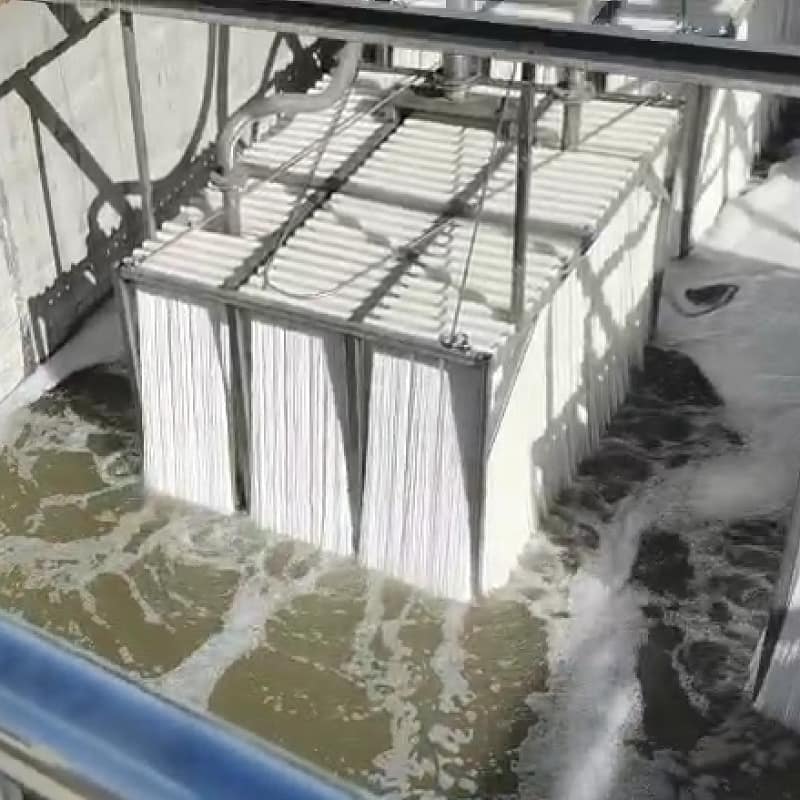As MBR (Membrane Bioreactor) technology becomes increasingly prevalent in wastewater treatment, many people still have misconceptions about how it works. While MBR systems offer significant advantages, understanding their limitations and proper application is essential for achieving optimal results.
- Misconception: MBR Systems Guarantee High Effluent Quality
Reality:
MBR technology integrates membrane filtration with activated sludge processes, replacing traditional secondary clarifiers. While this combination enhances solid retention and sludge concentration, it does not guarantee perfect effluent quality under all circumstances. Membrane filtration is highly effective for removing suspended solids (SS), but organic matter removal still depends on the biological treatment process. For wastewater with poor biodegradability or previously treated water, the MBR system may show limited effectiveness. - Misconception: The Higher the Membrane Flux, the Better
Reality:
Membrane flux, a measure of how much water the membrane can filter over time, is limited by the membrane material and design. Although higher flux rates are desirable for higher capacity, they also come with trade-offs in membrane longevity and operational efficiency. Membranes with smaller pore sizes provide better filtration but at the cost of reduced flow. When designing MBR systems, it’s crucial to adhere to the manufacturer’s specifications to ensure an optimal balance between flux, durability, and overall performance. - Misconception: MBR Systems Do Not Require Sludge Removal
Reality:
MBR systems offer high sludge concentrations, which enable longer hydraulic and sludge retention times. However, this does not eliminate the need for sludge management. If sludge is not removed, it will eventually become less effective biologically, potentially leading to issues with membrane fouling and aeration. While MBR technology significantly reduces the amount of sludge to be removed compared to conventional systems, regular maintenance and appropriate sludge management are still necessary for system efficiency. - Misconception: Reducing Sludge Concentration Prevents Membrane Fouling
Reality:
Membrane fouling, a common challenge in MBR systems, is caused by the accumulation of solids on the membrane surface. Some believe that reducing sludge concentration can prevent fouling; however, both too high and too low sludge concentrations can lead to faster fouling. The optimal approach is maintaining sludge concentration within a recommended range, while proper aeration can help prevent fouling by regularly cleaning the membrane surface. - Misconception: Membranes Are Responsible for Effluent Quality
Reality:
While MBR membranes play a crucial role in enhancing the biological treatment process by retaining solids and increasing sludge concentration, they are not solely responsible for effluent quality. The removal of organic pollutants, such as COD (Chemical Oxygen Demand), depends on the biological treatment process and the overall system design. The membrane primarily focuses on the filtration of suspended solids, but the treatment of dissolved substances is achieved through the biological reaction and overall system operations. - Misconception: MBR Systems Are Only Suitable for Domestic Wastewater
Reality:
MBR technology is versatile and can be applied to a variety of wastewater types, including municipal, industrial, and even highly specialized wastewater streams. The key to successful MBR application is ensuring proper pre-treatment, especially when dealing with wastewater that may cause membrane fouling. Industries such as food processing, pharmaceuticals, and chemical manufacturing have also successfully implemented MBR technology to meet stringent effluent standards.
Conclusion: Clearing Up Misconceptions and Maximizing MBR Potential
By understanding these common misconceptions, industries and municipalities can better leverage the power of MBR technology for wastewater treatment. MBR systems, with their high efficiency, compact design, and customizable solutions, offer exceptional performance. However, it’s important to understand their limitations and ensure proper system design and maintenance.
At RANDL ENVIRONMENT, we specialize in providing advanced MBR solutions tailored to meet the unique needs of our clients. Our expertise in MBR membrane technology ensures that we can deliver reliable, sustainable, and cost-effective wastewater treatment solutions for a wide range of applications.

